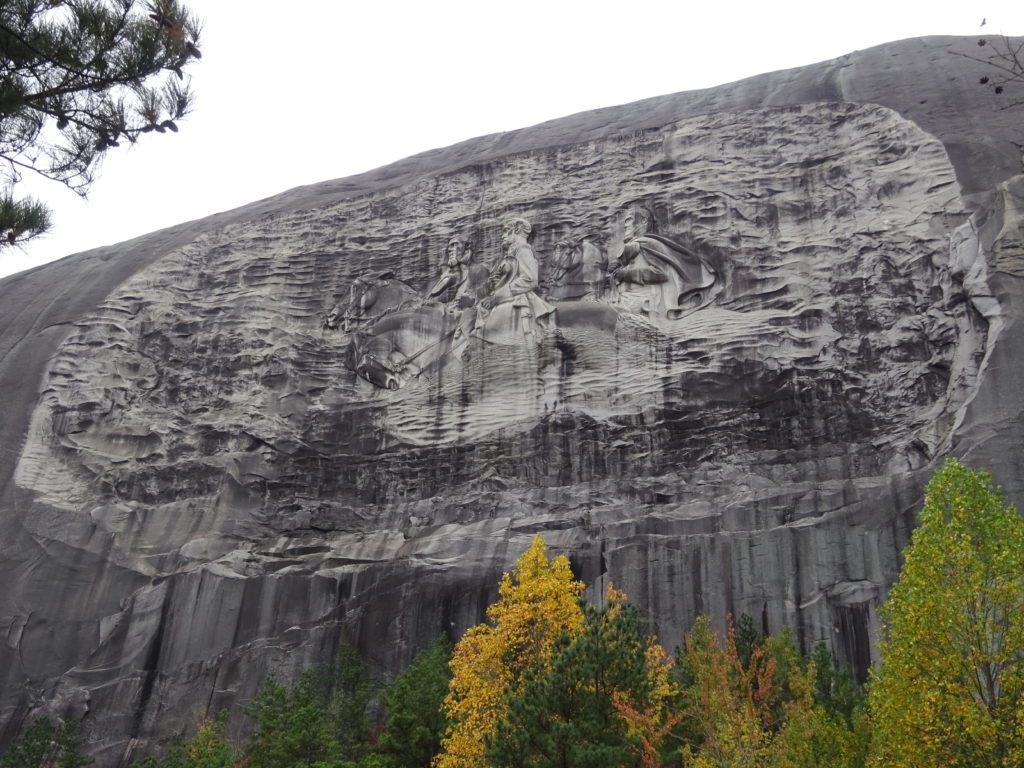“Stop honoring racist losers.” These are the words on a sign held by a protester in Weatherford, Texas earlier this year. Like so many intolerant bullies have been doing throughout these horrible last seven or so months, this person was demanding that a Confederate statue be removed from its place in front of the county courthouse. The protest in question happened back in July, but the topic is still (sadly) relevant and I still have strong opinions about it, so it is still worth blogging about.
At the protest on July 25, a group of hundreds of counter-protesters who support the monument arrived to stand up to 75 or so protesters who were demanding the statue’s removal. Unjustly, the media coverage largely portrayed the counter-protesters as the ones who acted wrongly. For example, the Fort Worth Star-Telegram emphasized the fact that one counter-protester allegedly punched a protester, another counter-protester allegedly slapped a protester, and some counter-protesters allegedly yelled racial slurs and threw water bottles. (This despite the fact that the video accompanying the article shows Black Lives Matter protesters initiating the pushing and shoving.) Reporter Bud Kennedy tweeted repeatedly about a “white male attacking the leader of a justice protest” and claimed that “there is no question justice protesters were the ones attacked” despite the fact that the latter claim is false, that repeatedly mentioning an individual’s race and gender is racist and sexist, and that the protest was in favor of removing a Confederate statue, which makes it the exact opposite of a justice protest.
“We started to march, and you could hear the roar of the crowd downtown,” said one BLM protester named Karen Smith, according to the Star-Telegram. “I live here, and I have never seen a display of hate.” The lead bully who organized the protest, Tony Crawford, said, “The level of hatred I saw yesterday was something I hadn’t experienced before.” Another BLM protester claimed that their group did not “try to fight or incite any riots.” And various protesters complained that police failed to protect them.
News flash: anyone who expresses support for removing a Confederate statue is a mean, nasty, authoritarian bully who does not deserve any type of protection. It is irrelevant which side initiated physical contact. Advocating that a Confederate statue be removed is necessarily an act of aggression, and the side that takes this position is necessarily to blame for any conflict that may occur. Anyone who doubts this need only take a look at some of the signs held by the protesters: “Your heritage is racist,” “It’s not ‘Southern pride,’ it’s racist,” and the aforementioned “Stop honoring racist losers,” to give a few examples. Plus, a Facebook post by the group organizing the protest called the statue “treasonous.” How can people who insult another group’s heritage and falsely call the other group racist claim not to be initiating a fight? How can someone who crows about having won a war 150 years ago and considers it treasonous to memorialize those who fought for independence claim that the other side is the aggressor? The political correctness movement’s own signs and Facebook posts disprove their claims of having been victimized. If you go out of your way to stomp on the underdog, insult an unpopular minority, and rub salt into the wounds of the losing side of a war, you have no right to complain when the people that you are harming get angry at you and fight back.
The blog Living Blue in Texas provided an even more egregiously biased version of events. The blogger repeatedly defamed the defenders of the statue by calling them “violent racists,” “terrorists,” and “aggressors,” and personally insulted them by calling them “toothless hillbillies.”
“The Confederate States of America no longer exists,” she pompously writes. “And until these backwoods hillbillies realize that, they will continue to harass, threaten, and assault every anti-racist working to make the world a better place. Slavery is over. The sooner that the violent racists realize it, the sooner we can start to heal.”
Except that those who advocate for the removal of Confederate statues are working to make the world a worse place, not a better one. And that those defending the statues are not violent racists, or racists of any sort, for that matter. The fact that the C.S.A. no longer exists is exactly why statues honoring it are so important. The Southern states were denied the right to form an independent nation, so to attempt to deny them the right to even memorialize their dead is beyond ridiculous. To take away a Confederate monument is to further hurt a group who are already hurting, and who have already been treated unjustly. This is the exact opposite of healing. It’s easy for someone to talk about healing when they are not part of the group whose history and identity are under constant attack.
Jim Webster, a member of the counter-protest, hit the nail on the head with these comments to the Star-Telegram: “Weatherford citizens stood up to people who came to take down our statue, to tell us how to run our lives and, overall, be bullies… But the thing is, they came to us. We didn’t go to them. We didn’t start anything. They came over here starting stuff. And the citizens of Weatherford won’t put up with being bullied. They consider everybody who tried to protect the statue racist. You know if everybody is a racist, then nobody is a racist.”
Exactly. Enough with these people who go out of their way to trample on an unpopular minority and then claim that said unpopular minority is the aggressor. Enough with this practice of calling everything that you disagree with “racist.” If you don’t want a fight, don’t start one by trying to bully another group into removing their statue.


